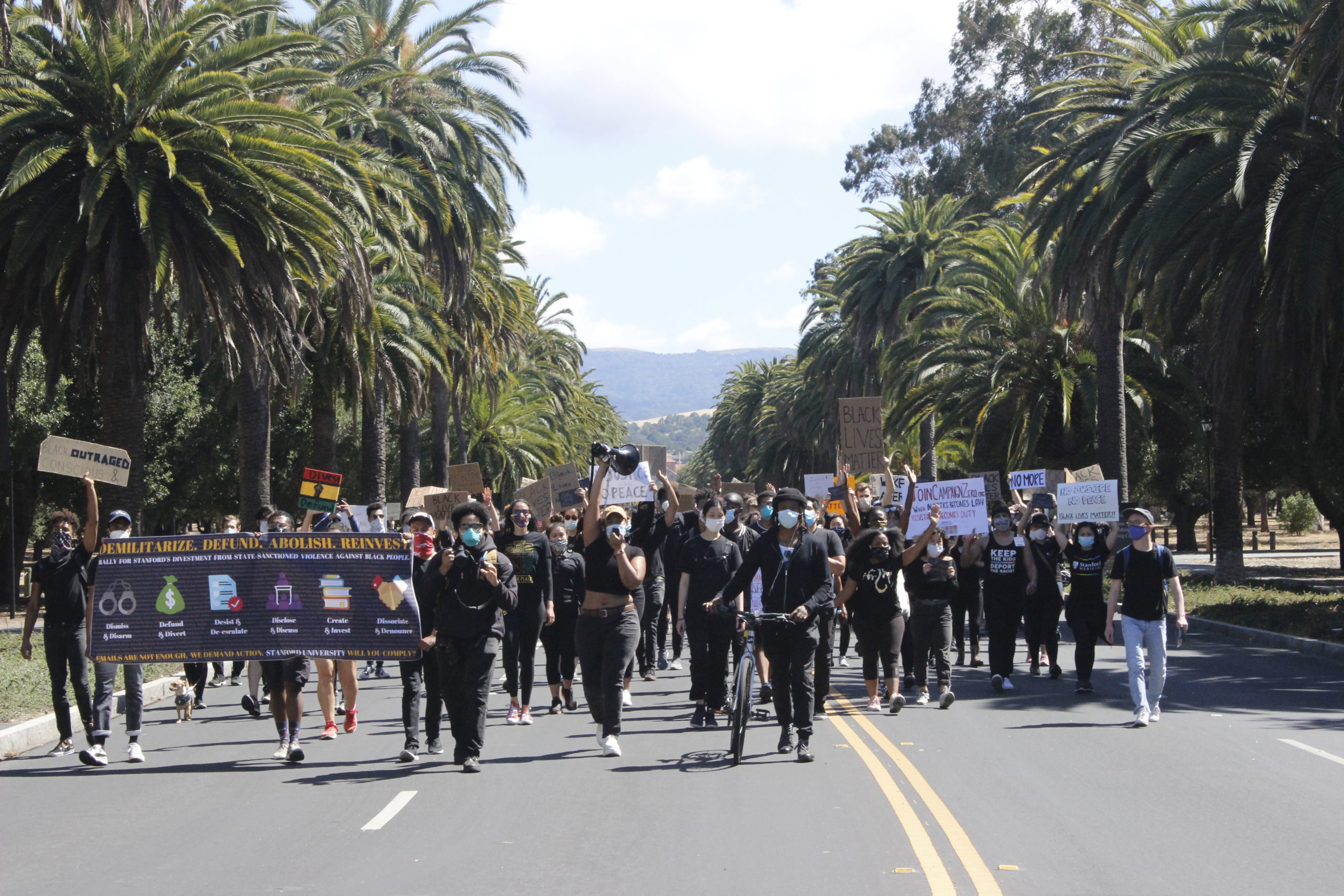StandFor, a coalition centered on building in-roads between justice movements at Stanford, held its inaugural town hall on Thursday.
The virtual gathering brought together about 100 Stanford undergraduate and graduate students, staff, faculty and alumni in the wake of the killing of George Floyd.
Many of the attendees had cut their teeth in organizing already, working with organizations including Fossil Free Stanford, the Stanford Solidarity Network and the First-Generation Low-Income Partnership. Others said they were new to community organizing.
Tania Flores, one of the organizers of StandFor and a first-year Ph.D. student studying Latin American cultures, said this intersectionality is precisely what StandFor aims to facilitate.
“There is amazing organizing and activism taking place on Stanford’s campus, but we often don’t have a mechanism to bring it together,” Flores said.
David Palumbo-Liu, another StandFor organizer and a professor of comparative literature, said that activists at Stanford may “accidentally encounter each other.”
“StandFor is a common ground, a network of solidarity and mutual support and learning,” he said. “We believe scholarship must be connected to activism and civil purpose.”
Common ground
The town hall began with listening.
Attendees sat — completely silent — on a Zoom call, listening to Nina Simone’s rendition of “I Wish I Knew How It Would Feel to Be Free.” The Billy Taylor original was a cultural touchstone of the American civil rights movement, but Simone’s recording of it in her album “Silk and Soul” redefined it into a call for racial justice.
Then, organizers shared a word cloud of the values each individual had selected as being important to them in advance of the town hall.
Flores appreciated that the word cloud was balanced with both deconstructive values, like abolition and anti-racism, as well as constructive ones, like justice, equity and love.
“We can’t have a movement without knowing what we’re taking down, and what we’re replacing it with,” she said.
A political agenda and vision
Aryn Frazier and Donovan Hicks, co-presidents of the Black Law Students Association (BLSA) and first-year law students, shared the work they were engaged in alongside other Black student organizations on campus, asking the University to “to rethink its complicity with police and state violence.”
Discussions of police violence and Stanford’s complicity in it are not new to campus. Students have been thinking more about the role of police on campus since the police response to a noose sighting last year.
Frazier advocated for disarmament of campus police and “non-partial” alternatives to calling the police, which don’t exacerbate existing social disparities.
“Not only are the police violent and particularly violent to marginalized communities, but don’t necessarily achieve what we think we’re asking for when we call the police,” she said. “They’re never going to find your bike that went missing last night, but they are going to harass Black, Brown, poor and ‘suspicious’ people.”
Attendees then split into breakout groups to discuss how a racial justice framework helps coordinate advocacy groups; how to incorporate Black solidarity into organizational work; and how to develop tangible next steps toward building out the StandFor coalition.
Palumbo-Liu said he was most surprised by how the town hall “quickly and firmly reached consensus about not only common values across organizations and individuals, but also about what people believed the most urgent issue to address is: anti-Black racism.”
Attendees floated ideas including mandating Stanford community members take anti-racist training, like it does for graduate students with Title IX training; creating and transforming political education to “fit this new world”; and using Stanford Daily articles to create institutional memory for historic racism and injustices.
Putting in work
What comes next? To Flores, hard work.
Asked by The Daily when her community organizing work began, she credited a multi-generational familial legacy of activism: “My grandparents were both educated at boarding schools for Indigenous children in the Oaxaca mountains, and became union organizers in Mexico City.”
Her parents moved to Chico, California, and insisted they spend summers in her grandmother’s rural Indigenous village. Flores’ education in race consciousness also came from watching her mother — Leslie Layton ’79, “a pretty woke white woman” — interact with her Indigenous grandparents.
“My mom would sit with my great grandfather for hours,” Flores said. “As a journalist, she would listen, asking him how to say words in Mixteco, and record him.”
This legacy is the foundation for Flores’ words at the town hall: “Coalition building is hard work that requires we be on our A-game. I know we’re all here today to do that work.”
At the town hall’s end, Palumbo-Liu said coalitions are not built alone: “The whole point behind StandFor is to lean on each other.”
A previous version of this article misspelled “Oaxaca.” The Daily regrets this error.
Contact Yasmin Rafiei at yrafiei ‘at’ stanford.edu.
